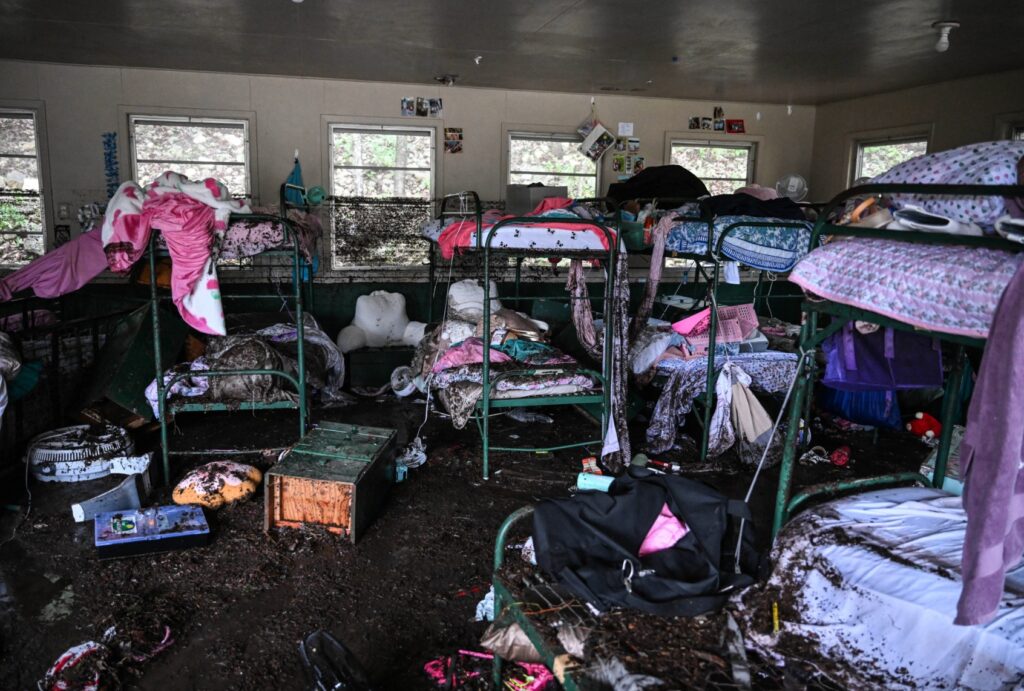
In a grim parallel to the devastation caused by Hurricane Helene, which struck North Carolina in September 2022, recent floods in Texas have led to more than 100 confirmed deaths, many of them children. The flooding was triggered by the remnants of Tropical Storm Barry, which inundated rivers and creeks in the hilly regions of south-central Texas, raising serious questions about the effectiveness of emergency alerts and local responses.
According to local officials, the warnings issued prior to both disasters were accurate and timely. Yet, as the tragic outcomes reveal, there was a significant disconnect between these alerts and the actions taken on the ground. In North Carolina, where Helene caused catastrophic flooding and landslides, Jeff Howell, the retired emergency manager of Yancey County, remarked, “We had no idea it was going to do what it did.” A similar sentiment was echoed by Rob Kelly, the county judge in Kerr County, Texas, who stated, “We had no reason to believe that this was going to be anything like what’s happened here.”
Warnings and Missed Opportunities
In both scenarios, the National Weather Service issued urgent alerts warning of severe flash flooding days before the storms hit. These alerts provided crucial information that could have facilitated timely evacuations. In Texas, flash flood warnings were sent out at 12:44 a.m. on July 4, 2023, with a follow-up alert from the National Weather Service at 1:14 a.m. highlighting the imminent danger. Despite these warnings, many local officials failed to take appropriate action.
At the time of the flooding, popular summer camps, including the century-old Camp Mystic, were filled with vacationers. Tragically, at least 27 campers and counselors lost their lives, while six remain missing. AccuWeather’s chief meteorologist, Jonathan Porter, expressed his dismay at the lack of timely evacuation measures, stating that campers were awakened by rising waters rather than evacuation orders. “It appeared camps and local officials could have mobilized sooner in response to the alerts,” Porter noted.
Local leaders, such as Dalton Rice, city manager of Kerrville, cited the rapid rise of floodwaters as a significant challenge to effective communication. Despite warnings being issued, he mentioned that he personally saw no signs of concern while jogging along the river at 3:30 a.m., just as the river surged upwards of 25 feet in two hours upstream. As the situation escalated, the weather service upgraded the alert to “emergency,” stressing that residents should “seek higher ground now.”
Challenges in Emergency Management
One of the key challenges during such disasters is ensuring that weather alerts effectively reach those in harm’s way. In both Texas and North Carolina, rural areas often face spotty cellphone service, making it difficult for residents to receive timely notifications. Furthermore, many residents are not signed up for local alert systems, which require voluntary enrollment. In Kerr County, the local emergency management system, CodeRed, is utilized, but it remains unclear how effectively it functioned during the flood.
Pete Jensen, a veteran in emergency management, emphasized the need for accountability, stating, “There’s an awful lot of denial. Disasters happen to someone else. They don’t happen to me.” This mindset can extend to local officials who may misjudge the urgency of a situation. In Texas, the governor, Greg Abbott, has called for a special legislative session to address flood communication and emergency preparedness, a response that was notably absent in North Carolina following Hurricane Helene.
In North Carolina, lawmakers have yet to discuss potential changes to improve emergency responses, such as expanding evacuation plans or increasing funding for local emergency services. As Senator Julie Mayfield highlighted, “There still has not been an outcry here for, How do we do things differently?”
The aftermath of these tragedies underscores a critical need for effective communication and proactive measures in emergency management. As communities continue to grapple with the impacts of severe weather, the lessons learned from both Texas and North Carolina may serve as a catalyst for change in how local authorities respond to future disasters.







